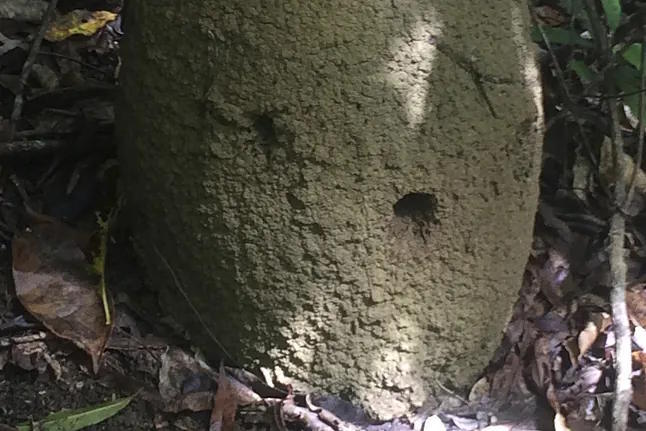Famous for their ability to destroy wood, no one would think of saving tropical rainforests by planting termite nests. Precisely because no one had thought of it, some reforestation projects in Australia were doomed to fail.
Research led by scientists from the Cary Institute of Ecosystem Studies, just published in the Journal of Applied Ecology, suggests that termites would be necessary for the replanted tropical forests of Australia to thrive. Apparently, they are essential for nutrient recycling. That is, for the health of young forests. "People thought that just planting trees was enough, but it's not," says Baptiste Wijas, a postdoctoral researcher at the Cary Institute and a professor at the University of Queensland in Australia.
Restored forests make up an increasing proportion of the total area of the tropical rainforest. It is one of the best strategies we have come up with to preserve biodiversity and remove carbon from the atmosphere.
Termites Protect Tropical Forests from Droughts Caused by Climate Change
Amy Zanne, another scientist leading the project, wanted to discover the role of termites and fungi as decomposers in replanted forests. To do this, she placed wooden blocks in three forest areas of a primary forest in the Daintree tropical rainforest in Australia and waited. Originally lowland rainforests until around 1900, they were converted into pineapple, banana, and oil palm plantations, but were abandoned in the 2000s before being replanted by the NGO Rainforest Rescue in 2010 and 2014.
Over four years, the team checked the wooden blocks every six months to see if they had been invaded by fungi, termites, or both, and measured how quickly the blocks decomposed. Based on previous studies, the team expected termite activity to be similar in replanted forests and primary forests.
Fungi appeared almost equally in both primary and replanted forests, but not termites, which decomposed the wooden blocks more slowly in the replanted forests, even 12 years after reforestation.
A lower decomposition rate could mean a slower return of carbon and nutrients to the soil, which could harm the forest's health and future growth. To avoid these negative impacts, scientists propose transplanting dead logs from primary forests into new forests to attract decomposers from other areas.
"A young, regenerating forest doesn't have much dead wood," explained Zanne. "By bringing in these logs, you are providing them with food to sustain themselves while waiting for parts of the new trees to break down."
The team is now considering transplanting termite mounds directly into the forests along with the dead wood. Although Wijas and Zanne acknowledge that convincing forest managers may be very challenging.
It is known that around 3% of termites damage homes, Zanne pointed out, but very little is known about the remaining 97%. "We believe that termites could be sequestering carbon in their nests. When they eat wood, they can't digest it all, so the feces they use to build their nests could be quite rich in carbon. They might even sequester more than they emit, but we don't know yet," says Wijas.
Termites are also associated with nitrogen-fixing bacteria, vital for the growth and functioning of trees. "Termites and fungi are absolutely essential for forest functioning, and it would be interesting to see who else returns to regenerating forests if there are termites: perhaps ants, lizards, and sugar gliders, which feed on termites. At the moment, we simply have no idea if they are returning to these systems," says Zanne.
